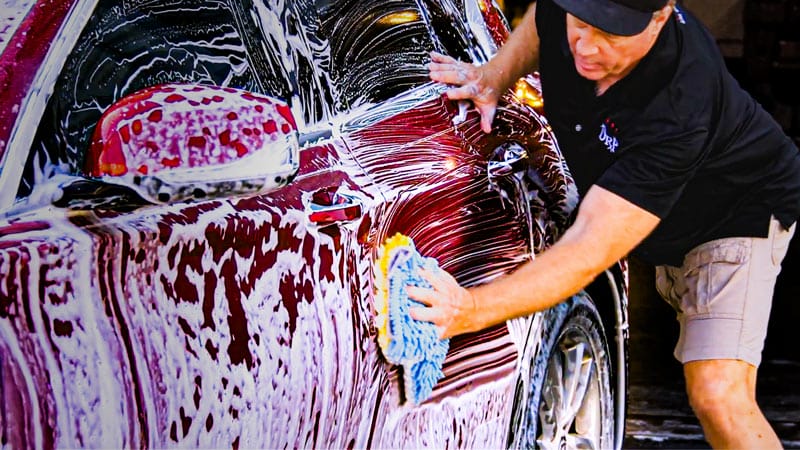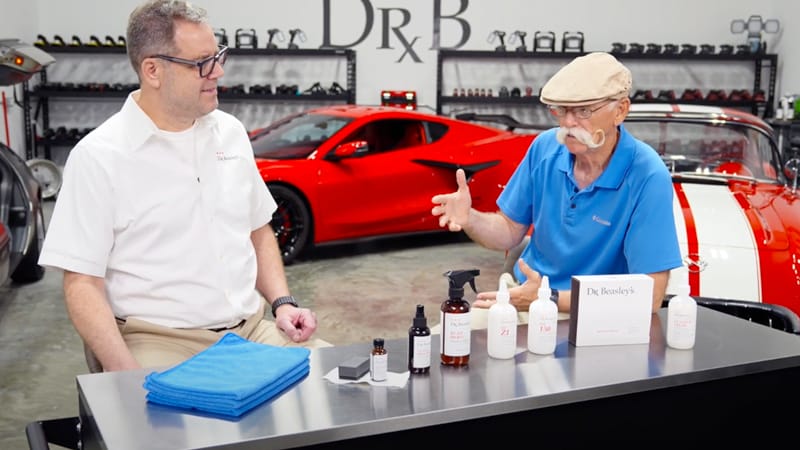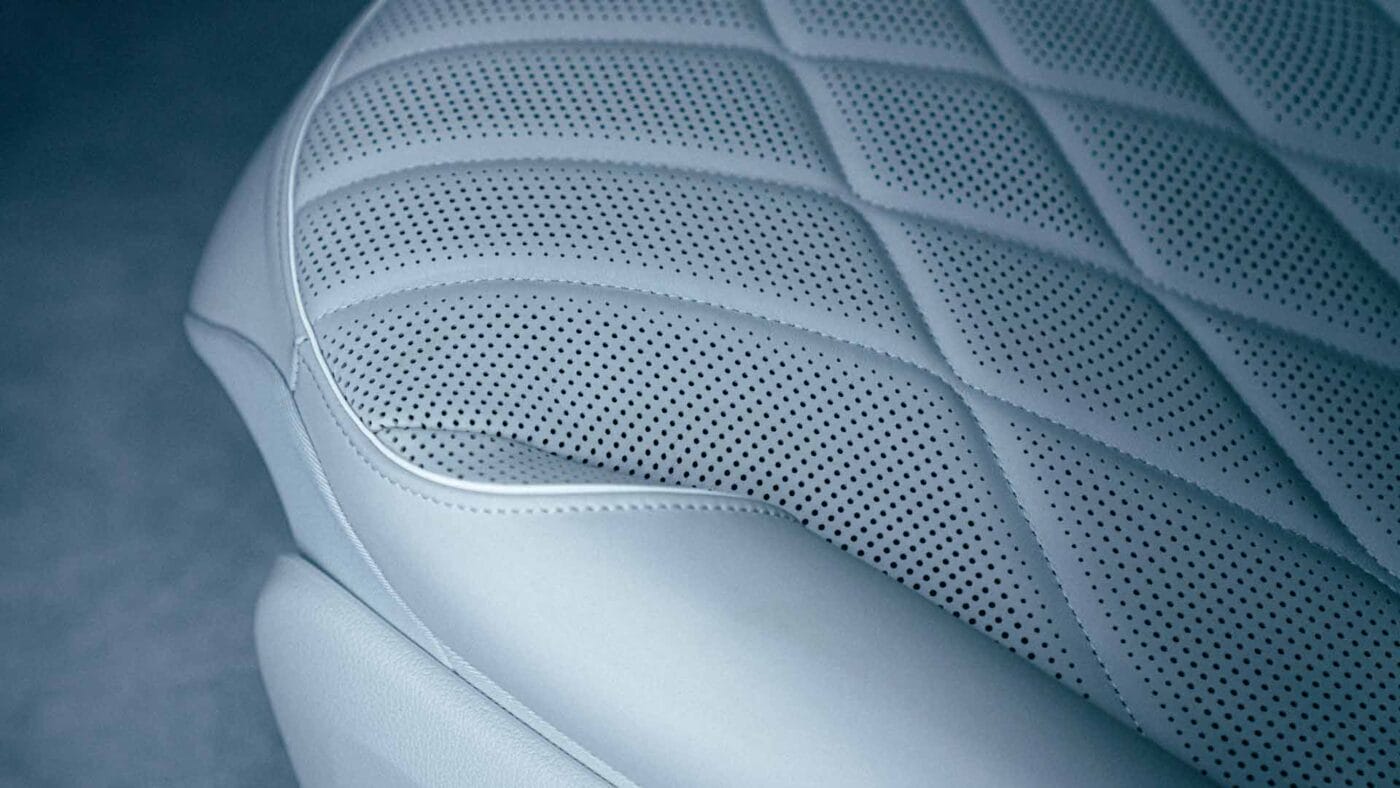Over the past decades perforated leather seats have become more and more common, especially in luxury and higher-end vehicles.
These perforations provide passageways for the HVAC system to push hot or cold air through, providing the highest level of comfort for the driver and their passengers.
The tiny holes, however, pose a problem for those cleaning their leather interiors: how do you clean perforated leather without getting the cleaner, conditioner or protective coating stuck inside the holes?
It’s a lot simpler than it seems — it mostly comes down to using application techniques that minimize the amount of product or liquid applied to the surface so there isn’t enough to actually clog the holes.
In this article, we’ll explain these special cleaning, conditioning and protecting techniques for perforated leather so you can get beautiful leather without compromising the comforts perforated leather provides.
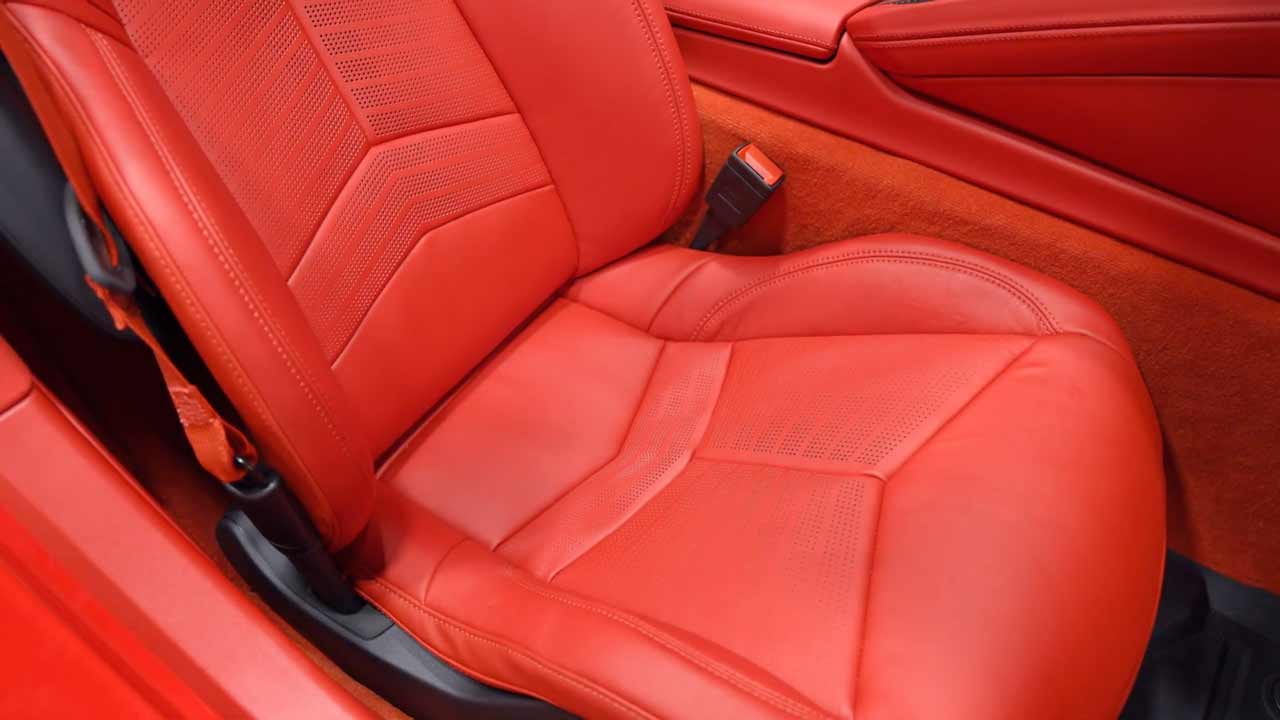
Why You Need to Be Careful Cleaning Perforated Leather
You need to be careful when cleaning perforated leather simply because it’s easy to get product stuck in the holes. Why is this a concern? There are quite a few reasons.
Moisture Penetration: Using too much cleaning solution can cause moisture to penetrate the perforations and get trapped underneath the leather. This can cause mold or mildew growth, not to mention unpleasant odors and even damage to electronic components that control heating and ventilation.
Residue Build-Up: Over-application of conditioners and creams can fill and block the perforations. This prevents air from passing through, making the HVAC functions useless. It also leaves unsightly residue inside the holes, creating a mottled appearance on your leather.
Physical Wear & Tear: Perforated leather can be thinner and weaker due to the tiny holes that line the surface which reduce the overall strength of the material. Excessive rubbing or brushing can potentially tear perforated leather.
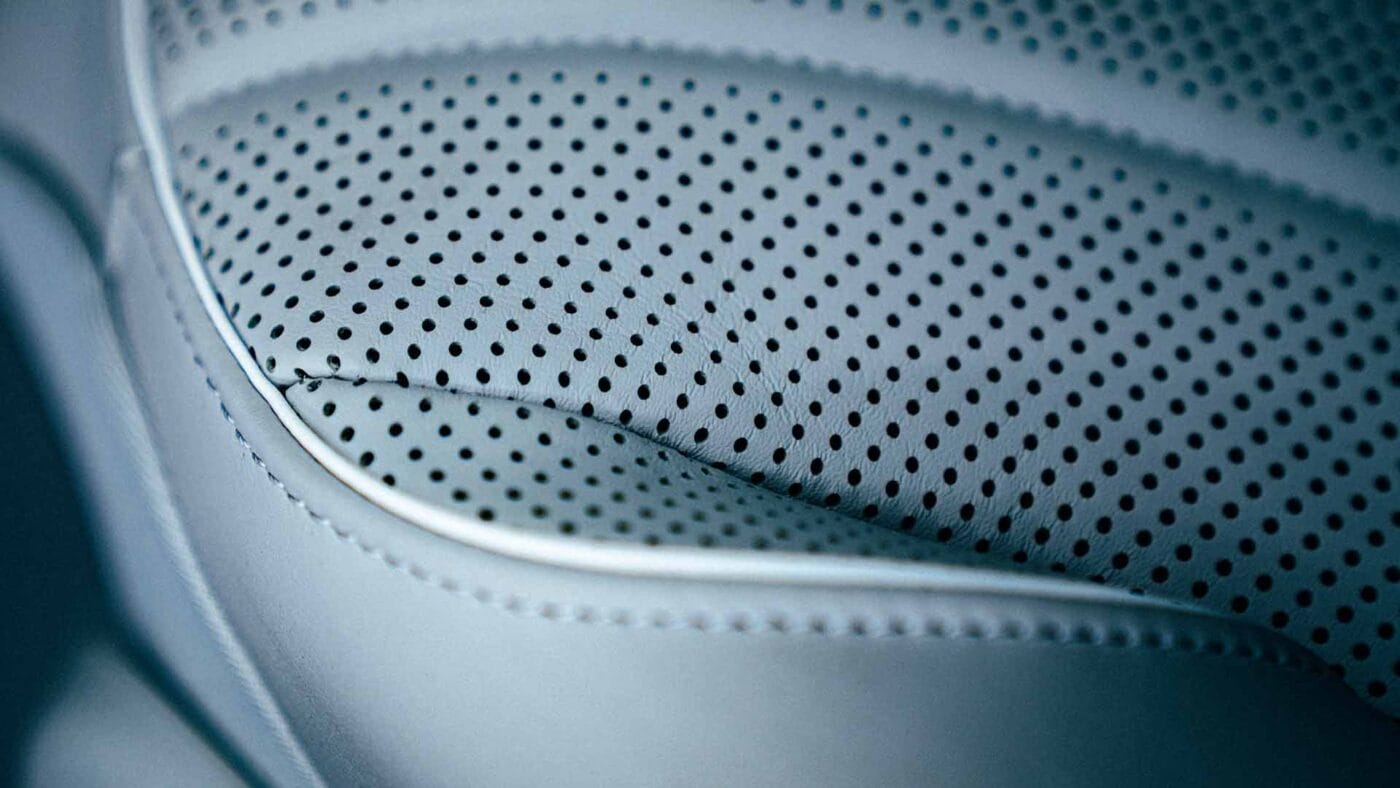
How to Clean Leather Seats with Holes
Here are step-by-step guides to cleaning, conditioning and protecting leather seats with holes. These guides take into account the risk of clogging the perforations or damaging this thinner material.
Step 1: Spray Leather Cleaner Onto Microfiber Towel
The primary concern when using cleaning sprays on perforated leather is getting moisture trapped in the holes. To avoid this, DO NOT SPRAY THE PERFORATED LEATHER DIRECTLY.
Instead, spray onto a microfiber towel first, holding the bottle six inches away. Use a leather cleaning spray that’s designed to remove organic contamination and is pH-balanced so as not to damage the delicate perforated leather.
Step 2: Wipe Perforated Leather Surface
Once the towel is primed with a leather cleaning solution, clean the leather by wiping the towel across the perforated leather. After wiping, flip to the dry side of the towel to gently buff off any excess.
How to Condition Leather Seats with Holes
Conditioning leather seats with holes is a little trickier than cleaning perforated leather, simply because conditioners are typically cream-based and therefore easier to clog inside the holes. Follow these steps in order to apply the conditioner without filling the perforations.
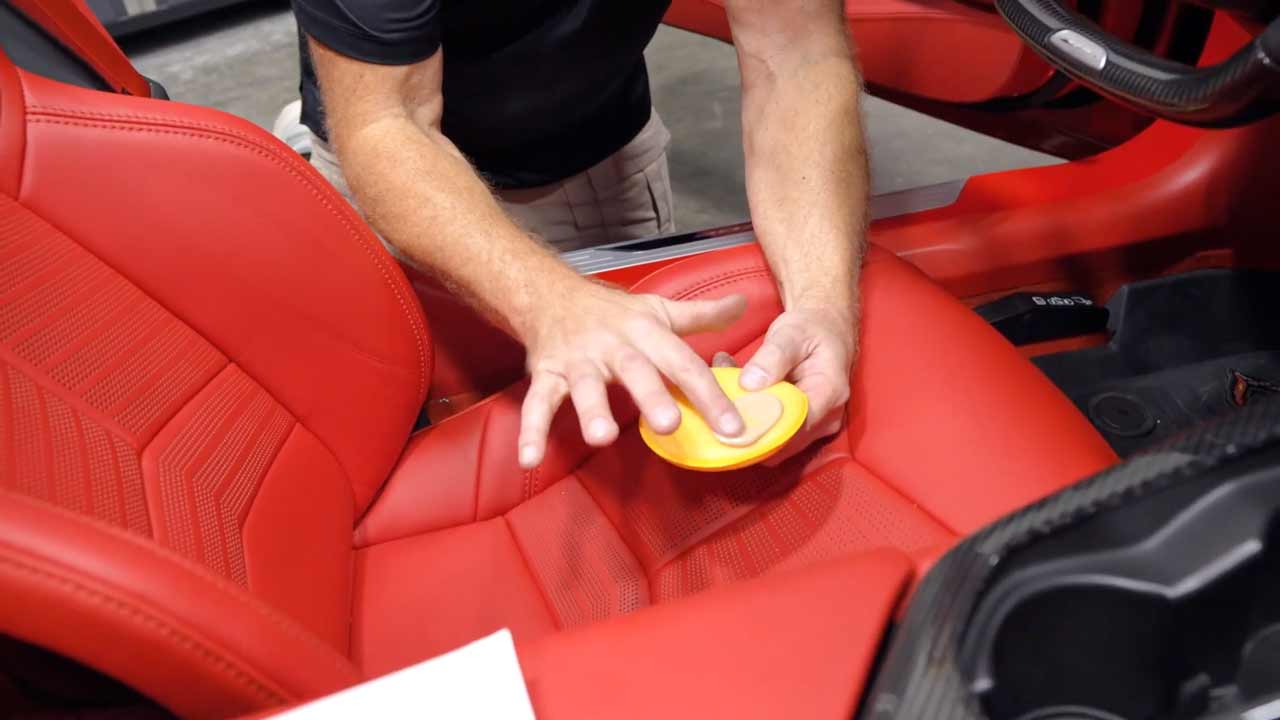
Step 1: Prime Applicator with Leather Conditioner
Using a non-greasy conditioner like Dr. Beasley’s Leather Cream, apply a small amount of conditioner to a foam applicator. Using your finger, press the product into the foam so there is less excess sitting on the surface.
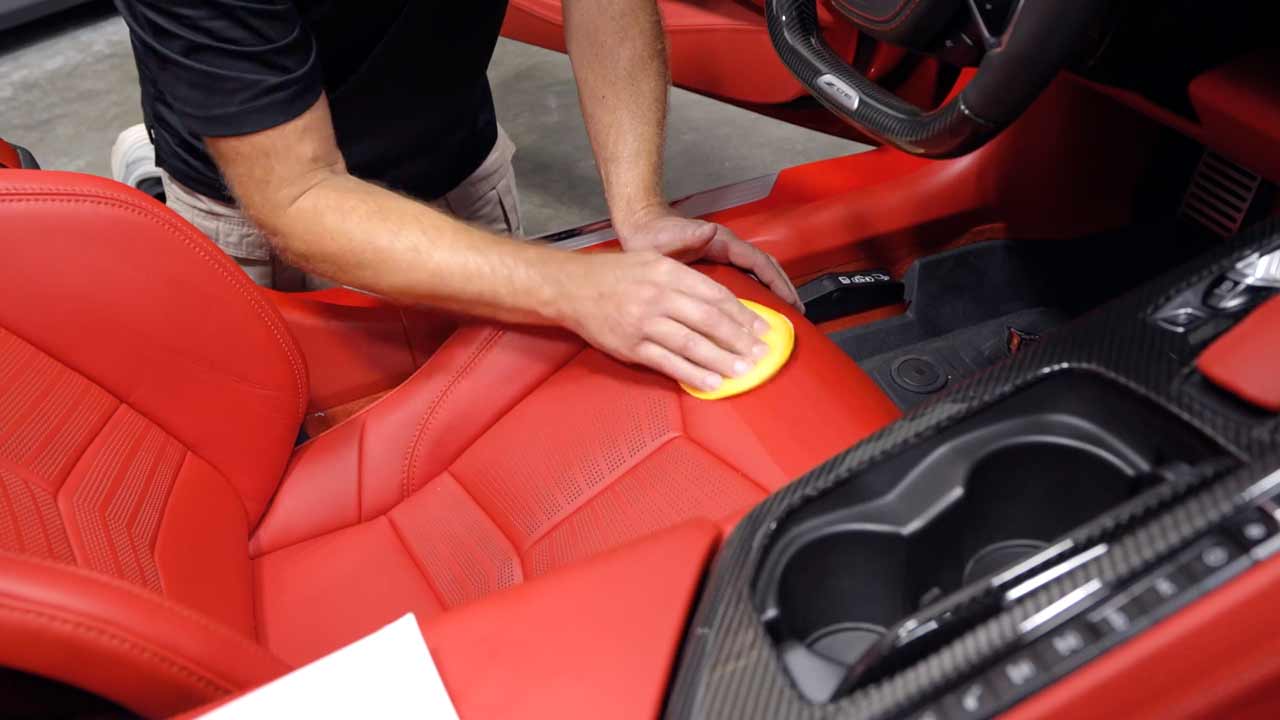
Step 2: Start Applying to Non-Peforated Leather Sections
Find a non-perforated section adjacent to the perforated leather and start applying the leather conditioner. This will help spread the conditioner out on the applicator so there’s less product that could clog the perforations.
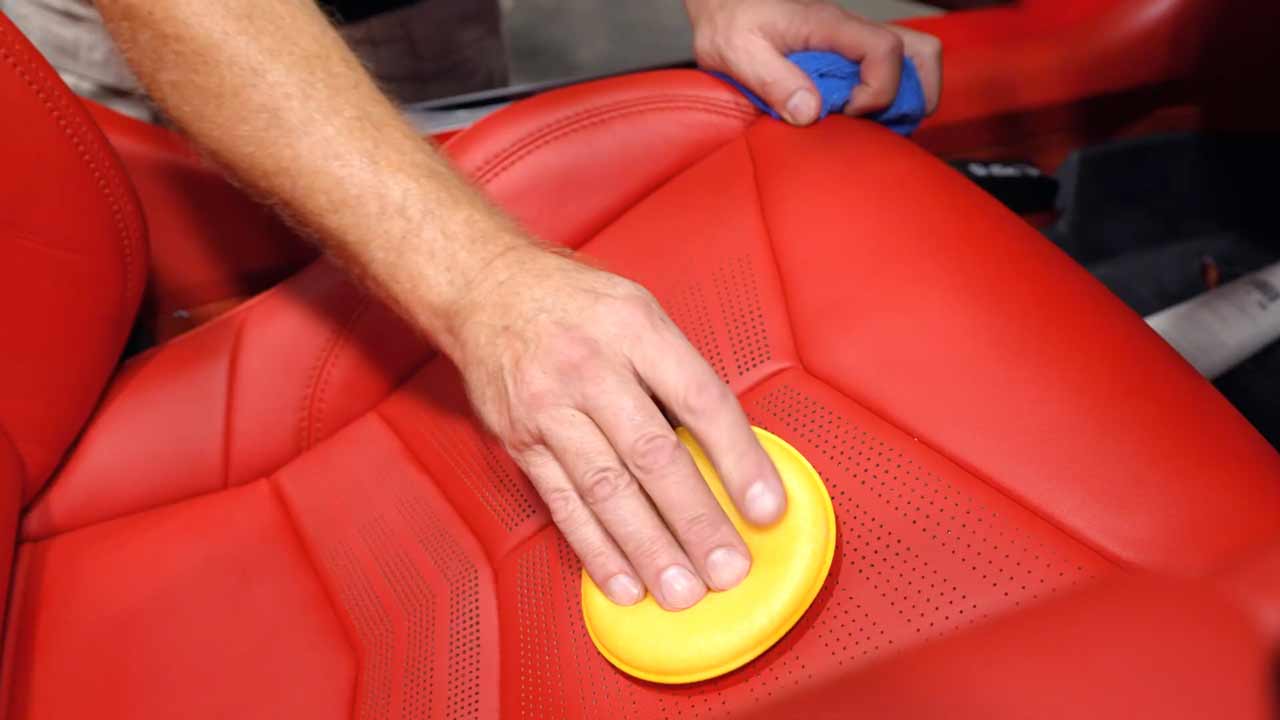
Step 3: Maneuver Applicator to Perforated Leather Sections
Once the conditioner is spread out on the applicator, maneuver the applicator to the perforated section and begin applying. At this point the leather conditioner is spread out enough on the applicator that only a thin film is being applied, which keeps the perforations open and unclogged.
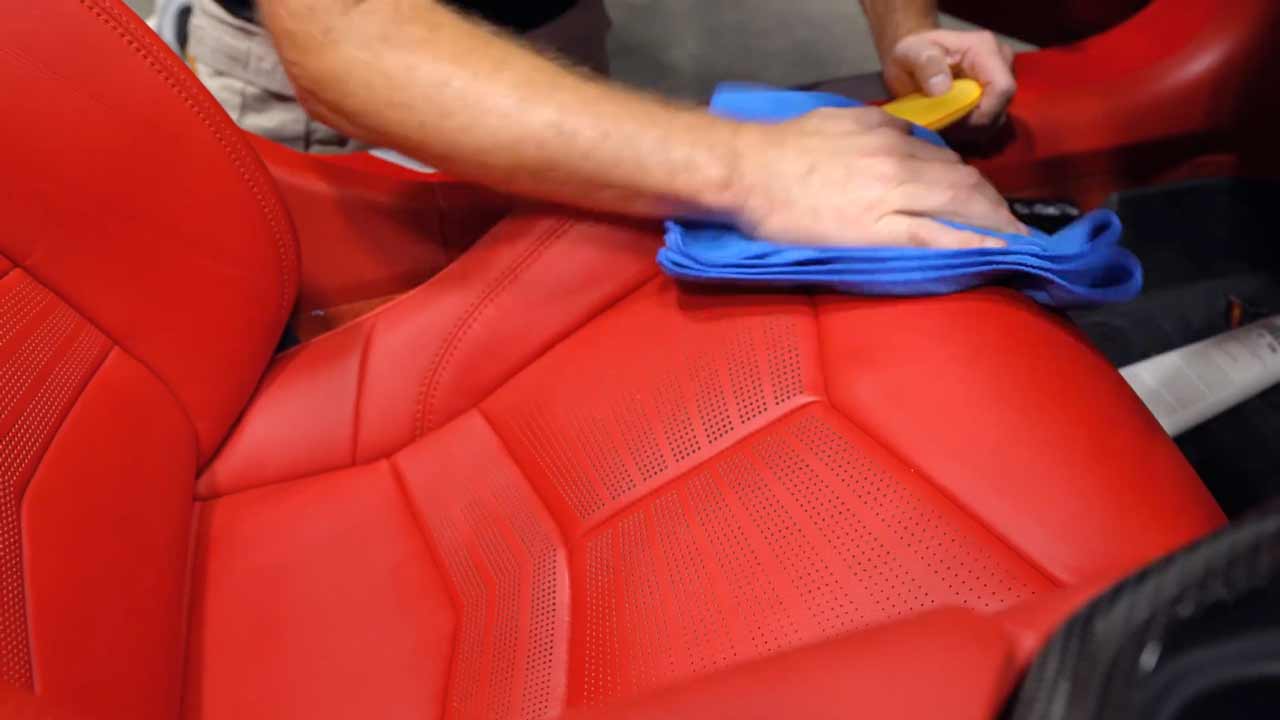
Step 4: Gently Buff with Clean Microfiber Towel
Once the conditioner is applied over the perforated leather, wipe away the small amount of excess with a microfiber towel.
How to Protect Leather Seats with Holes
Ceramic coatings designed for automotive leather are a popular way to make leather easier to clean, prevent grime and contamination from sticking and resist color fading from the sun’s UV rays.
There is concern, however, that a ceramic coating will block the perforations and prevent ventilation or heat from flowing through. As long as you pick the right ceramic coating, however, you can protect the holes in your perforated leather without sealing off the heating and cooling properties.
Ceramic coatings for leather like Dr. Beasley’s Leather Lock Pro protect leather with a crosslinked, net-like nanostructure that is flexible and porous enough to allow air to flow through the ceramic coating. This breathable ceramic nanostructure ensures cool or hot air can travel through the perforations unimpeded.
Safely cleaning leather car seats with holes mostly comes down to not over-applying product and using gentle methods when wiping or brushing the surface. Avoiding over-application ensures the perforations are not clogged, while delicate handling prevents any damage to the weaker perforated material.
Have questions or concerns about caring for leather seats with holes? Have product or contamination clogged inside the perforations? Comment below with your question and we’ll answer as best we can.

